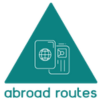Table of Contents
- Understanding the Medical Registration Process
- Navigating the Job Market
- Settling in Australia
- Key Takeaways
- Final Thoughts
- FAQs
How Can Doctors Migrate to Australia?

Dreaming of practicing medicine in Australia? This guide simplifies the migration process for doctors, outlining key steps and essential information to help you achieve your goals.
If you’re a doctor considering a move to Australia, you’re likely excited about the possibilities while also facing a whirlwind of questions and concerns. The process of relocating can feel daunting, but rest assured, many have successfully made this journey, and with the right information and preparation, you can too.
Australia is known for its high standard of living, world-class healthcare system, and a welcoming multicultural society. As a doctor, your skills and expertise are in high demand, and the country offers a range of opportunities for career growth and personal fulfillment. Let’s walk through the steps and considerations involved in making this significant move.
Thinking about migrating to Australia as a doctor? Here’s a guide to help you navigate the journey and make your move successful.
Understanding the Medical Registration Process
The first crucial step in your journey is registering with the Medical Board of Australia (MBA). This organization assesses your qualifications and determines your eligibility to practice in Australia.
First and foremost, it’s crucial to understand the medical registration process in Australia. Unlike some other professions, practicing medicine requires thorough verification of your qualifications and experience to ensure they meet Australian standards.
1. Verify Your Qualifications
The Australian Medical Council (AMC) is the body responsible for assessing the credentials of overseas-trained doctors. You’ll need to have your medical degree and postgraduate training recognized by the AMC. This involves submitting your documents and possibly undergoing further examinations.
2. English Language Proficiency
Proficiency in English is essential for practicing medicine in Australia. You may need to pass the IELTS or OET exams to demonstrate your language skills.
3. Apply for a Visa
Once your qualifications are recognized, the next step is to secure a visa. The most common visa for doctors is the Skilled Independent visa (subclass 189) or the Skilled Nominated visa (subclass 190). These visas require you to submit an Expression of Interest (EOI) through the SkillSelect system.
Navigating the Job Market
With your qualifications recognized and visa application underway, it’s time to focus on finding employment. The Australian job market for doctors is competitive, but numerous resources can help you secure a position.
4. Networking and Job Portals
Networking is invaluable. Reach out to colleagues, join professional associations, and attend industry events. Additionally, use job portals like Seek, Indeed, and specialized medical recruitment agencies to find opportunities.
5. Understanding Employment Contracts
Before signing any employment contract, it’s essential to understand the terms and conditions. Ensure you know your rights, obligations, and what to expect regarding salary, working hours, and other benefits.
Settling in Australia
Moving to a new country involves more than just finding a job. You’ll need to settle into your new environment, which includes finding a place to live, understanding the local culture, and adjusting to a new healthcare system.
6. Finding Accommodation
Start by researching different cities and neighborhoods to find an area that suits your lifestyle and budget. Websites like Domain and Realestate.com.au are great resources for finding rental properties.
7. Embracing the Culture
Australia is known for its friendly and laid-back culture. Take time to explore your new surroundings, participate in community events, and get to know your neighbors. This will help you feel more at home and integrate into the local community.
8. Healthcare System Familiarization
Understanding the Australian healthcare system is crucial for both your professional and personal life. Familiarize yourself with the structure, policies, and practices to ensure you can provide the best care to your patients and navigate the system for your own needs.
Key Takeaways
✔ Overview of Australia’s medical registration process.
✔ Visa options and eligibility requirements.
✔ Steps to secure a job as a doctor in Australia.
✔ Important tips for a smooth transition.
How can doctors migrate to Australia?
Doctors can migrate to Australia by securing medical registration, meeting visa requirements, and obtaining employment in the healthcare sector. This process involves verifying qualifications, applying for the appropriate visa, and successfully passing medical exams.
Final Thoughts
Migrating to Australia as a doctor is a challenging but rewarding process. With proper planning, patience, and persistence, you can successfully transition to practicing medicine in this beautiful country. Remember, every journey is unique, so be prepared for unexpected twists and turns along the way.
Are you ready to take the first step towards your Australian medical career? Start by thoroughly researching the registration process and reaching out to other doctors who’ve made the move. Your Australian adventure in medicine awaits!
FAQs
How Can Doctors Migrate to Australia?
Doctors can migrate to Australia by first getting their medical qualifications verified by the Australian Medical Council (AMC), demonstrating English proficiency through exams like IELTS or OET, and applying for the appropriate visa such as the Skilled Independent (subclass 189) or Skilled Nominated (subclass 190). Additionally, they should focus on finding employment through job portals and professional networks, and integrate into the local culture and healthcare system.
What are the basic requirements for medical registration in Australia?
The primary requirements include having your medical qualifications verified by the Australian Medical Council (AMC), passing an English language proficiency test (such as IELTS or OET), and obtaining the necessary visa. You may also need to complete additional assessments or exams depending on your specialization.
How long does the migration process typically take for doctors?
The timeline can vary significantly depending on individual circumstances. Generally, the process can take anywhere from 12 to 24 months. This includes the time needed for qualification verification, language testing, visa application, and job searching.
Are there specific regions in Australia with a higher demand for doctors?
Yes, regional and rural areas often have a higher demand for doctors. These areas may offer additional incentives such as relocation assistance, higher salaries, and pathways to permanent residency. However, there are also opportunities in metropolitan areas, though they may be more competitive.
What support is available for overseas doctors settling in Australia?
Various support networks and resources are available, including professional associations, mentorship programs, and community groups. Many hospitals and healthcare facilities also provide orientation programs and assistance with the relocation process.






